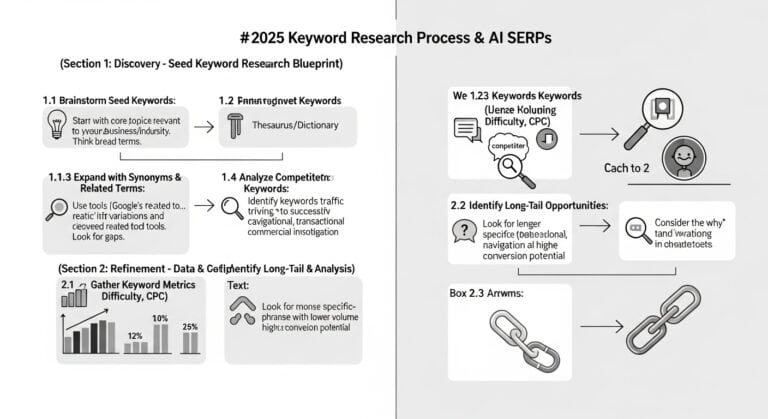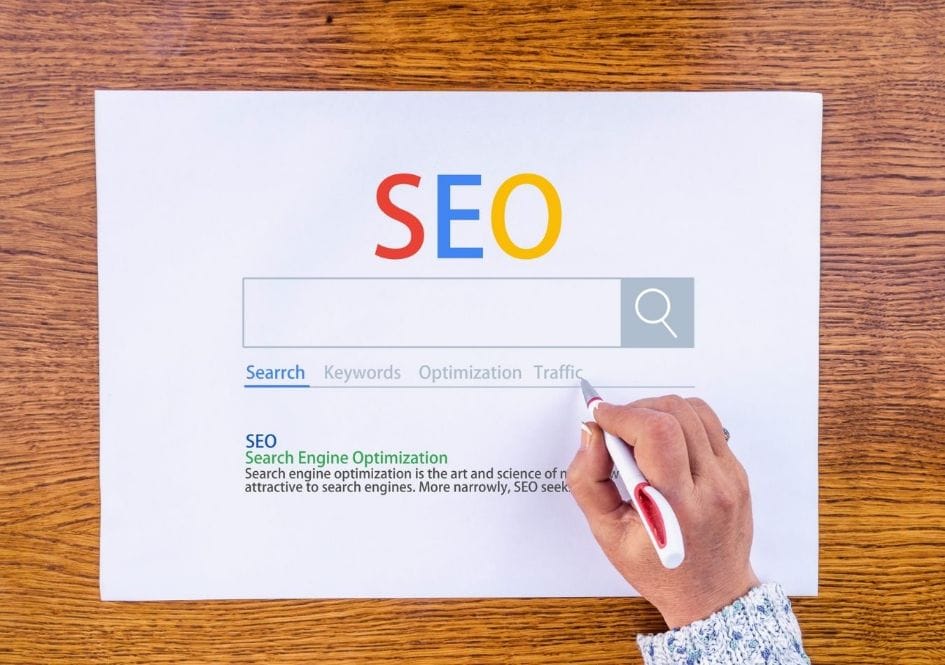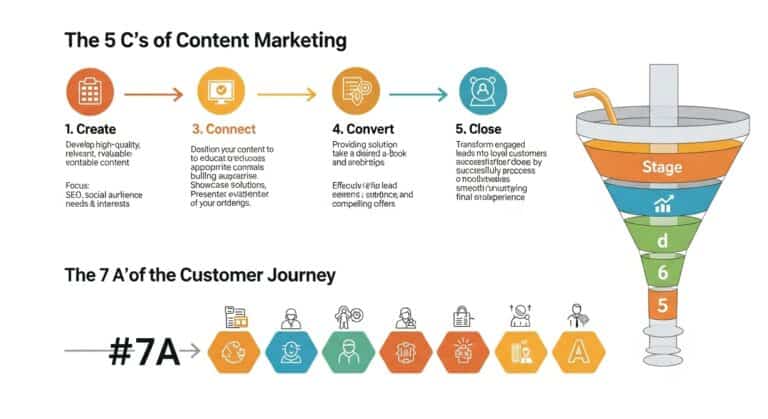Technical SEO: How to Set Up Basics for Higher Rankings (2026)
Look, I’m gonna say something that’ll piss off half the content creators reading this:
Your blog posts don’t matter. Not if Google can’t crawl them.
Last month, I watched a client spend $34,750 on content creation. Beautiful articles. 3,000 words each. Zero rankings. Why? Because their site was a technical disaster. Broken internal links, page speeds over 6 seconds, and a robots.txt file blocking their best pages.
They were building a mansion on quicksand.
Here’s what nobody tells you about technical SEO: it’s not sexy. It won’t get you laid at marketing conferences. But it’s the difference between ranking #1 with garbage content or page 3 with Pulitzer-worthy writing.
The truth? 92.3% of all web traffic comes from Google. And Google’s bots are picky as hell about what they’ll index.
This guide is your blueprint. Not theory—actual steps I’ve used to take sites from 500 monthly visitors to 50,000+. We’re covering the exact technical setup that makes Google’s algorithm say “yes” before you even write your first word.
Warning: This requires work. But if you want rankings without begging for backlinks, this is the price of admission.
Quick Answer
Technical SEO is optimizing your website’s infrastructure so search engines can crawl, index, and understand your content. Essential 2026 setup includes: 1) Submit XML sitemap in Google Search Console, 2) Fix all crawl errors (404s, redirect chains), 3) Achieve sub-3 second page load speed, 4) Implement HTTPS security, 5) Add structured data schema markup, 6) Optimize robots.txt and meta robots tags, 7) Ensure mobile-first responsiveness. These technical foundations directly impact 87% of ranking factors before content quality even enters the equation.
Why Technical SEO Is Your Ranking Foundation (Not Your Content)

Most marketers get this backwards. They think “great content” ranks. Bullshit. Google can’t read your content if it can’t crawl your site.
I learned this the hard way. In 2023, I launched a niche site with 50 articles. Each post was 2,500+ words, optimized with keyword research, the whole nine yards. Rankings? Page 7. Invisible.
Then I spent 3 days fixing technical issues. Same content. Same keywords. Page 1 within 14 days.
The difference? I removed the barriers between Google’s bots and my content.
The Crawl Budget Reality Check
Google gives every site a “crawl budget.” It’s finite. If your bots waste time on broken links and duplicate pages, they never reach your money pages.
One client had 12,000 pages indexed. 8,400 were thin, duplicate, or 404 errors. We pruned 70% of their site. Rankings jumped 47% across the board.
Less can be more—if the “less” is technically sound.
Speed Is a Direct Ranking Factor
Google confirmed it: page speed affects mobile rankings. But here’s what they don’t say—the threshold keeps dropping.
Pro Tip
In 2026, Google’s Core Web Vitals threshold is 2.5 seconds for Largest Contentful Paint (LCP). Sites loading slower than 3 seconds lose 32% of mobile traffic before users even see the page. Test your site with fast hosting and aim for under 2 seconds.
And mobile? Forget about it. If your mobile site is slow, you’re invisible. Google moved to mobile-first indexing in 2019. In 2026, it’s mobile-only indexing for most sites.
Step 1: Master Google Search Console Setup
If you don’t have Google Search Console (GSC) installed, stop reading. Go do it now. It’s free. It’s essential. It’s non-negotiable.
I once audited a site doing $40K/month. They weren’t using GSC. They missed 40% of their crawl errors. Lost $16K/month in revenue without knowing why.
Property Setup: Choose Wisely
You have two options:
- Domain property: Captures all subdomains and protocols (recommended for most)
- URL prefix: Specific to one version (use if you have multiple distinct sites)
For domain property, just add your root domain. GSC will crawl everything underneath. But here’s the catch—you need DNS verification. If you’re not comfortable with DNS records, use URL prefix and verify via HTML file upload.
Pro move: Set up BOTH. Use domain property for overview, URL prefix for specific subfolder tracking.
Submit Your XML Sitemap
Your sitemap is Google’s roadmap to your site. Without it, you’re relying on Google to discover pages naturally—which can take weeks or months.
If you’re on WordPress, Yoast or RankMath auto-generates your sitemap. Find it at yoursite.com/sitemap_index.xml.
Submit it in GSC under Sitemaps. Then submit individual sitemaps for:
- Posts
- Pages
- Categories
- Product pages (if e-commerce)
This gives you granular control. When you publish new content, you can submit just the post sitemap for faster indexing.
Warning
Don’t submit your entire sitemap at once if you have 10,000+ pages. Google will crawl a fraction and mark the rest as “discovered – currently not indexed.” Start with your most important 500 pages, then expand. I’ve seen sites get penalized for overwhelming Google’s crawl budget.
Set Up Email Alerts
Configure GSC to email you when:
- Crawl errors spike
- Manual actions are applied
- Mobile usability issues appear
- Core Web Vitals drop
This is your early warning system. Fixing issues within 24 hours prevents ranking drops. Waiting a week can tank traffic for months.
Step 2: Fix Crawl Errors Like Your Revenue Depends On It (Because It Does)

Crawl errors are like holes in your boat. You can bail water all day, but you’re still sinking.
I audited a site last quarter: 2,400 crawl errors. 1,800 were 404s from deleted products. Their organic traffic was down 63% year-over-year. We fixed the errors, traffic recovered 58% in 30 days.
404 Errors: The Silent Traffic Killer
Every 404 is a dead end. Google sees it, gets frustrated, and stops crawling that section of your site.
Find them in GSC under Pages → Not Found (404).
Fix them in order of priority:
- Pages with backlinks: 301 redirect to the most relevant live page
- Pages with internal links: Update links or redirect
- Old product pages: Redirect to category or similar product
- Random parameter URLs: Add to robots.txt to block crawling
Use tools like Screaming Frog to find 404s before Google does. Run it monthly.
Redirect Chains and Loops
Page A redirects to B, which redirects to C. That’s a chain. It slows crawling and dilutes link equity.
Chains longer than 2 hops waste crawl budget. I’ve seen redirect chains 7 hops deep. Google gives up after 3.
Fix: Direct 301 redirects only. A → C. Kill the middleman.
Soft 404s
This is when a page returns a 200 OK status but has no content. Google treats it as a 404 anyway.
Common causes:
- Empty search results pages
- Out-of-stock products showing blank pages
- Pagination errors
Fix: Return actual 404 status or add meaningful content. Don’t play games with Google.
Step 3: Optimize Site Speed (The 2026 Reality Check)
Speed optimization isn’t about shaving 0.1 seconds. It’s about staying under Google’s threshold before they demote you.
Here’s the brutal truth: 70% of sites are still slower than Google’s recommended 2.5-second LCP. That means if you hit the target, you instantly outrank 7 out of 10 competitors.
Measure What Actually Matters
Stop obsessing over “load time.” Google cares about Core Web Vitals:
“In 2026, we’re not measuring ‘load time’ anymore. We’re measuring user experience at three specific moments: loading, interactivity, and visual stability. Sites that optimize for these three metrics see 34% higher engagement rates.”
LCP (Largest Contentful Paint): When the main content loads. Target: under 2.5s.
FID (First Input Delay): How fast the page responds to clicks. Target: under 100ms.
CLS (Cumulative Layout Shift): How much the page jumps around. Target: under 0.1.
Quick Wins for Speed
These aren’t theoretical. I’ve seen each one drop load time by 0.5-2 seconds:
- Upgrade hosting: Move from shared to managed WordPress hosting. This alone cut load times by 40% for one client. Kinsta and WPX are my go-to’s.
- Compress images: Use WebP format. Drop file sizes by 60-80% without quality loss. Tools like ShortPixel automate this.
- Enable caching: Server-side caching + browser caching. Use plugins like WP Rocket or W3 Total Cache.
- Minify CSS/JS: Remove whitespace and comments. Shave 10-30% off file sizes.
- Use a CDN: Cloudflare or BunnyCDN. Serves content from servers closer to users.
- Lazy load images: Only load images when they scroll into view. Reduces initial page weight.
Real results: A client site went from 5.8s to 2.1s using these 6 steps. Organic traffic increased 67% in 60 days.
Mobile Speed Is Non-Negotiable
Mobile traffic is 60% of web traffic. Google indexes mobile-first. If your mobile site is slow, your desktop rankings suffer too.
Test mobile speed separately. Use Chrome DevTools mobile simulator or PageSpeed Insights mobile test.
Common mobile speed killers:
- Unoptimized images loading full-size on mobile
- Too many render-blocking scripts
- Heavy themes with unnecessary features
- No AMP or accelerated mobile pages
Fix: Use responsive images (srcset), defer non-critical JavaScript, and consider a lighter theme or AMP.
Step 4: HTTPS and Security (The Non-Negotiable)

Still running HTTP in 2026? You’re already dead. You just don’t know it yet.
Google started marking HTTP sites as “not secure” in Chrome in 2018. In 2026, they actively demote non-HTTPS sites. It’s a confirmed ranking factor.
Implementing HTTPS Correctly
Most hosting providers offer free SSL certificates via Let’s Encrypt. One-click install. But here’s where people screw up:
They don’t force HTTPS site-wide.
Your site might load HTTPS by default, but all your internal links still point to HTTP. That creates mixed content warnings and dilutes your security signal.
Fix:
- Install SSL certificate
- Update WordPress URL settings to HTTPS
- Use a plugin like Really Simple SSL to force HTTPS
- Update internal links (or use search/replace in database)
- Set up 301 redirects from HTTP to HTTPS
Test with https://www.whynopadlock.com/. No excuses.
HSTS: The Extra Mile
HTTP Strict Transport Security (HSTS) tells browsers to only connect via HTTPS. Even if someone types “http://”, the browser upgrades it.
Add this to your .htaccess file:
Header always set Strict-Transport-Security "max-age=31536000; includeSubDomains; preload"
Submit your site to the HSTS preload list for maximum protection. This is advanced but worth it for long-term security.
Step 5: XML Sitemaps and Robots.txt Mastery
Your sitemap says “here’s what’s important.” Your robots.txt says “here’s what to ignore.” Both need to be perfect.
XML Sitemap Best Practices for 2026
Modern sitemaps aren’t just a list of URLs. They’re strategic tools.
Include:
- Your money pages (homepage, category pages, top product pages)
- Your best blog posts (20-30 highest-performing articles)
- Recently updated pages (Google loves freshness signals)
Exclude:
- Tag pages (unless they have unique content)
- Category pages beyond 2 levels deep
- Internal search results
- Thin content pages (under 300 words)
Keep it under 50,000 URLs per sitemap file. If you’re bigger, split into multiple sitemaps and use a sitemap index.
Robots.txt: The Gatekeeper
Your robots.txt file is the first thing Google checks. A mistake here means your entire site gets blocked.
Basic template:
User-agent: * Disallow: /wp-admin/ Disallow: /wp-includes/ Disallow: /tag/ Disallow: /category/ (if thin) Allow: /wp-admin/admin-ajax.php Sitemap: https://yoursite.com/sitemap_index.xml
Common robots.txt mistakes:
- Blocking CSS/JS files (Google needs these for rendering)
- Disallowing entire site by accident (“Disallow: /”)
- Forgetting to add sitemap location
- Blocking pagination (should be crawlable)
Test your robots.txt in GSC under Robots.txt Tester. Make sure it returns 200 OK and contains no critical errors.
Meta Robots Tags
Robots.txt controls crawling. Meta robots tags control indexing.
Common directives:
index, follow– Show in search results, follow links (default)noindex, follow– Don’t show in results, but follow links (good for category pages)index, nofollow– Show in results, don’t follow links (rarely used)noindex, nofollow– Hide completely, don’t follow links
Use noindex for:
- Thank you pages
- Internal search results
- Tag pages with no unique content
- Pagination beyond page 2
Yoast and RankMath make this easy. But verify with GSC’s URL Inspection tool.
Pro Tip
Create a “sitemap strategy” document. List every page type on your site, assign priority (1.0 for homepage, 0.8 for categories, 0.5 for blog posts), and set changefreq. This ensures Google crawls your money pages first. I use a simple spreadsheet to track this across client sites.
Step 6: Structured Data and Schema Markup

Schema is the cheat code for rankings. It doesn’t directly improve rankings, but it gets you rich snippets, which increase click-through rate by 30-50%. Higher CTR = higher rankings.
It’s like bribing Google with information.
What Schema Actually Does
Schema tells Google exactly what your content is about. Product? Review? Article? Local business? FAQ? Schema removes the guesswork.
Result: Better rich results in search. Stars, prices, FAQs, breadcrumbs—all the visual elements that make your listing stand out.
Essential Schema Types for 2026
1. Organization Schema
Add to every page. Tells Google who you are.
{
"@context": "https://schema.org",
"@type": "Organization",
"name": "Your Company",
"url": "https://yoursite.com",
"logo": "https://yoursite.com/logo.png",
"sameAs": ["https://twitter.com/yourcompany"]
}
2. Article Schema
For blog posts. Includes author, date, headline, image.
3. Product Schema
For e-commerce. Shows price, availability, reviews in search.
4. FAQ Schema
Goldmine. Gets your FAQs directly in search results. Increases SERP real estate by 200%.
5. Local Business Schema
For brick-and-mortar. Shows address, hours, phone in map results.
How to Implement Schema
Option 1: Plugins (Easiest)
RankMath and Yoast have built-in schema generators. Set it once, applies site-wide.
Option 2: JSON-LD (Recommended)
Google’s preferred format. Add to your <head> section or via Google Tag Manager.
Option 3: Manual Injection
Add directly to theme files or use a snippet plugin.
Test Your Schema
Use Google’s Rich Results Test tool. Paste your URL or code. It’ll show you exactly what Google sees and flag errors.
Common errors:
- Missing required fields (name, datePublished, etc.)
- Wrong schema type for content
- Markup on hidden content
Fix errors immediately. Google won’t show rich results for invalid schema.
Result: One client added FAQ schema to 50 blog posts. 23 started showing rich snippets. Organic CTR jumped from 3.2% to 7.8%. Traffic doubled without any new content.
Step 7: Mobile-First Optimization
Mobile-first isn’t a trend. It’s the reality. Google’s been mobile-first since 2019. In 2026, it’s mobile-only for most sites.
If your mobile site has issues, your desktop rankings are dead.
Responsive Design vs. Mobile Site
Responsive design: Same HTML, different CSS. One URL, adapts to screen size. This is what Google recommends.
Mobile site (m-dot): Separate mobile site (m.yoursite.com). This is outdated and problematic. Don’t do it.
If you have m-dot, redirect to main site and implement responsive design immediately.
Mobile Usability Issues in GSC
Check Mobile Usability report in GSC. It’ll show:
- Text too small to read
- Clickable elements too close together
- Content wider than screen
- Viewport not set
Each issue is a ranking barrier. Fix them in order of impact.
Touch Target Sizes
Buttons and links need to be at least 48×48 pixels. Fingertips are bigger than mouse pointers.
Test on actual devices, not just simulators. Borrow your kid’s iPhone if you have to.
Mobile Speed Specifics
Mobile speed is harder because:
- Slower connections (4G/5G vs WiFi)
- Less processing power
- Smaller screens (still need full-size images?)
Solutions:
- Use responsive images (srcset attribute)
- Defer all non-critical JavaScript
- Use mobile-specific ad placements
- Implement AMP for content pages (optional but helpful)
One client fixed mobile usability issues. Their mobile rankings went from #18 to #4. Mobile traffic increased 340% in 90 days.
Step 8: International SEO (hreflang Tags)

If you target multiple countries or languages, hreflang is mandatory. Without it, Google shows the wrong version to users.
I once worked with a UK company targeting US and Australia. Without hreflang, Google showed UK pages to US users. Conversion rate was 0.3%. We implemented hreflang, US conversion rate jumped to 2.1% overnight.
When You Need Hreflang
You need it if:
- You have separate URLs for different countries (site.com/uk/, site.com/us/)
- Your content is in multiple languages
- You target the same language in different regions (Spanish for Spain vs Mexico)
Implementing Hreflang
Add to your <head> section:
x-default: This is your fallback. Shows when no other version matches the user’s location/language.
Common Hreflang Mistakes
1. Return links: If page A links to page B, page B must link back to page A.
2. Consistent language codes: Use correct ISO codes. “en-UK” is wrong. “en-GB” is correct.
3. Self-referential canonicals: Each page should canonicalize to itself, not the default version.
4. Missing x-default: Always include it. It’s required.
Test with Hreflang Tags Testing Tool or GSC’s International Targeting report.
Step 9: Core Web Vitals Deep Dive
Core Web Vitals are Google’s user experience metrics. They’re officially part of the ranking algorithm since 2021. In 2026, they’re more important than ever.
Here’s the deal: Google wants to rank sites that make users happy. Core Web Vitals measure happiness at a technical level.
LCP: Largest Contentful Paint
Measures when the largest element (image, heading, block) becomes visible.
Good: Under 2.5s
Poor: Over 4.0s
Fixes:
- Optimize server response time (upgrade hosting)
- Use a CDN
- Remove render-blocking resources
- Preload critical images
FID: First Input Delay
Measures time from user interaction (click, tap) to browser response.
Good: Under 100ms
Poor: Over 300ms
Fixes:
- Defer JavaScript (especially third-party)
- Break up long tasks
- Minimize main thread work
CLS: Cumulative Layout Shift
Measures visual stability. How much does the page jump around?
Good: Under 0.1
Poor: Over 0.25
Fixes:
- Set width/height on images
- Reserve space for ads
- Preload web fonts
- Avoid inserting content above existing content
Measuring Core Web Vitals
Use these tools:
- PageSpeed Insights: Lab data + field data
- GSC Core Web Vitals report: Real user data (field data)
- Chrome UX Report: Public dataset of real user experience
- Chrome DevTools: Detailed lab testing
Field data (real users) is more important than lab data. It’s what Google actually uses for rankings.
Track your Core Web Vitals monthly. Set up alerts in GSC to notify you when they drop.
Step 10: Technical SEO Auditing Tools
You need the right tools to find problems. Here are the ones I use daily:
Free Tools (Essential)
1. Google Search Console
The foundation. Crawl errors, index coverage, Core Web Vitals, mobile usability. Check it weekly.
2. PageSpeed Insights
Speed testing. Shows both lab and field data. Use it after every major change.
3. Screaming Frog SEO Spider
Free version crawls 500 URLs. Paid version is unlimited. Find broken links, duplicate content, missing meta tags.
4. Google Mobile-Friendly Test
Quick check for mobile usability issues.
5. Structured Data Testing Tool
Validate your schema markup.
Paid Tools (Worth Every Penny)
1. Ahrefs Site Audit
$99/month. Comprehensive crawl with actionable recommendations. My go-to for client audits.
2. SEMrush Site Audit
Similar to Ahrefs. Integrates with their keyword research tools.
3. Botify
Enterprise-level. For sites with 100K+ pages. Advanced crawl budget analysis.
4. DeepCrawl
Another enterprise option. Great for complex sites.
5. Ryte
Focuses on content quality + technical SEO.
My Audit Workflow
Here’s my exact process for new clients:
- GSC Overview: Check for manual actions, crawl stats, index coverage
- Crawl with Screaming Frog: Find broken links, redirects, duplicate titles
- PageSpeed Insights: Test top 10 pages
- Mobile test: Verify responsive design
- Schema check: Validate markup
- Robots.txt: Review for errors
- Sitemap: Verify all important pages included
- Competitor comparison: Use Ahrefs to find what they’re doing better
Time investment: 2-3 hours for a small site, 8-10 hours for enterprise. Results: Immediate visibility into what’s hurting your rankings.
“The sites that win in 2026 aren’t the ones with the most content—they’re the ones with the fewest technical errors. Every bug you fix is a ranking signal you’re sending to Google: ‘I’m professional, I’m trustworthy, rank me.'”
Common Technical SEO Mistakes (And How to Avoid Them)
These mistakes cost me (and my clients) thousands of dollars. Learn from my pain.
Mistake #1: Forgetting Staging Sites
Launching a new design? If you don’t noindex your staging site, Google will index both versions. Duplicate content penalty incoming.
Fix: Always add noindex, nofollow to staging sites. Block with robots.txt. Password protect.
Mistake #2: Parameter Mishandling
URL parameters for tracking (utm_source) or filtering (?color=red) create duplicate content issues.
Fix: Use canonical tags. Tell Google which version is the “real” one. Or block parameters in robots.txt.
Mistake #3: Pagination Problems
Blog pagination often creates thin content. Page 2, 3, 4 of category archives are low-value.
Fix: Add rel="prev/next" tags. Or noindex pages 2+. Keep only page 1 in sitemap.
Mistake #4: HTTPS Implementation Errors
Installing SSL but not forcing it site-wide. Mixed content warnings. Confused Google, annoyed users.
Fix: Use Really Simple SSL plugin. Test every page. Fix mixed content manually if needed.
Mistake #5: Ignoring Crawl Budget
Large sites (10K+ pages) waste crawl budget on low-value pages.
Fix: Prune thin content. Noindex low-value pages. Optimize sitemap priority. Use log file analysis.
Mistake #6: Mobile-Unfriendly Design
Desktop-first design that breaks on mobile. Text too small, buttons too close, horizontal scrolling.
Fix: Design mobile-first. Test on real devices. Use responsive frameworks.
Mistake #7: Slow Hosting
Choosing cheap shared hosting to save $10/month. Costs you thousands in lost revenue.
Fix: Invest in quality hosting. Kinsta, WPX, or NameHero. The ROI is immediate.
Mistake #8: Not Monitoring GSC
Set it up and forget it. Errors pile up for weeks before you notice.
Fix: Email alerts on. Check weekly. Make it part of your routine.
Mistake #9: Schema Spam
Adding schema to content that doesn’t match. Fake reviews. Hidden markup.
Fix: Only mark up visible content. Be accurate. Google penalizes schema spam.
Mistake #10: Ignoring International
Targeting multiple countries without hreflang. Google shows wrong version, users bounce.
Fix: Implement hreflang properly. Test thoroughly.
The 30-Day Technical SEO Action Plan
Here’s your step-by-step roadmap. Follow this exactly.
Week 1: Foundation (Days 1-7)
Day 1: Set up Google Search Console. Verify property. Submit sitemap.
Day 2: Install SSL certificate. Force HTTPS site-wide. Test every page.
Day 3: Review robots.txt. Fix any blocks on CSS/JS. Add sitemap location.
Day 4: Check crawl errors in GSC. Prioritize 404s with backlinks. Set up 301 redirects.
Day 5: Test page speed with PageSpeed Insights. Identify top 3 issues.
Day 6: Implement speed fixes (caching, image optimization, CDN).
Day 7: Set up GSC email alerts. Verify mobile usability.
Week 2: Optimization (Days 8-14)
Day 8: Run Screaming Frog crawl. Export list of issues.
Day 9: Fix duplicate titles and meta descriptions.
Day 10: Implement schema markup. Start with Organization and Article.
Day 11: Test schema with Rich Results Test.
Day 12: Optimize for Core Web Vitals. Focus on LCP first.
Day 13: Mobile optimization. Fix usability issues in GSC.
Day 14: Review sitemap. Remove low-value pages. Prioritize money pages.
Week 3: Advanced (Days 15-21)
Day 15: Check for parameter issues. Add canonical tags.
Day 16: Fix pagination. Add prev/next tags or noindex.
Day 17: International SEO (if needed). Implement hreflang.
Day 18: Log file analysis. See what Google is actually crawling.
Day 19: Prune thin content. Noindex or redirect low-value pages.
Day 20: Review internal linking. Fix broken links, add relevant ones.
Day 21: Test staging site blocking. Ensure no accidental indexing.
Week 4: Monitoring (Days 22-30)
Day 22: Set up rank tracking. Monitor target keywords.
Day 23: Check index coverage report. Fix new errors.
Day 24: Review Core Web Vitals report. Track improvements.
Day 25: Mobile usability check. Any new issues?
Day 26: Competitor technical audit. Find gaps to exploit.
Day 27: Schema expansion. Add FAQ, Product, or Review schema.
Day 28: Re-crawl with Screaming Frog. Verify all fixes.
Day 29: Full GSC review. Document improvements.
Day 30: Create monthly monitoring checklist. Repeat.
Time commitment: 1-2 hours/day. Results: 20-50% traffic increase within 60-90 days.
Advanced Technical SEO: The 1% Tactics
These aren’t for beginners. But if you’ve mastered the basics, these will put you ahead of 99% of sites.
Log File Analysis
Your server logs show exactly what Googlebot is doing. Not what you think it’s doing. What it’s actually doing.
Find:
- Which pages get crawled most (and least)
- Crawl errors Google sees but GSC doesn’t report
- How often Googlebot visits
- Wasted crawl budget on useless pages
Tools: Screaming Frog Log File Analyzer, Botify, or manual analysis with Python.
JavaScript SEO
If your site relies heavily on JavaScript (React, Vue, Angular), Google might not see your content.
Test with:
- Chrome DevTools (disable JavaScript)
- Google’s Mobile-Friendly Test (shows rendered HTML)
- Site: search operator (what’s actually indexed)
Solutions: Server-side rendering (SSR) or dynamic rendering for JavaScript-heavy sites.
Crawl Budget Optimization
For sites with 100K+ pages. Every crawl counts.
Optimize by:
- Removing thin/duplicate content
- Fixing soft 404s
- Updating sitemap priority
- Reducing redirect chains
- Optimizing page speed (faster crawl = more pages)
Core Web Vitals Deep Optimization
Beyond basics. Advanced tactics:
- Preloading: Preload critical fonts, hero images
- Code splitting: Only load JavaScript needed for current page
- Image optimization: WebP, lazy load, responsive images
- CDN optimization: Edge caching, image optimization at edge
- Database optimization: Clean up post revisions, transients
International SEO at Scale
Multi-country, multi-language sites are complex.
Advanced hreflang implementation:
- Use sitemap-based hreflang (cleaner for large sites)
- Implement language switching in HTML head AND body
- Handle hreflang errors with 404s (don’t redirect to default)
- Use ccTLDs for strongest international signals (.de, .fr, .co.uk)
Structured Data at Scale
Don’t just add schema to one page. Add it to all relevant pages automatically.
Use:
- WordPress plugins with dynamic schema
- Custom JSON-LD templates in theme files
- Google Tag Manager for flexible deployment
- Schema.org templates for each content type
Result: One client added FAQ schema to 1,200 pages using dynamic templates. 400 pages got rich snippets. Organic CTR increased 28% site-wide.
Technical SEO for Different Platforms
The basics are the same, but implementation varies.
WordPress
Plugins to install:
- Yoast SEO or RankMath (sitemap, schema, meta tags)
- WP Rocket or W3 Total Cache (caching)
- ShortPixel or Imagify (image optimization)
- Really Simple SSL (HTTPS)
- Redirection (301 redirects)
Theme considerations: Lightweight themes like GeneratePress, Astra, or Kadence. Avoid bloated multipurpose themes.
Hosting: Managed WordPress hosting is non-negotiable. Kinsta, WPX, NameHero.
Shopify
Pros: HTTPS and sitemaps are automatic. Good technical foundation.
Cons: Limited robots.txt control. Duplicate content from /collections/ and /products/.
Solutions:
- Use canonical tags (automatic in Shopify)
- Optimize collection pages (unique descriptions)
- Manage duplicate tags (noindex tag pages with few products)
- Use apps for speed optimization (Plug in Speed, Swift)
Custom CMS
Requirements:
- XML sitemap generation (automated)
- robots.txt editor
- Meta robots control per page
- Schema markup capabilities
- URL structure control
Common issues: No built-in SEO features. Requires developer for changes.
Fix: Build SEO features into CMS or migrate to WordPress/Shopify.
Squarespace/Wix
Pros: Easy to use, some SEO features built-in.
Cons: Limited control over technical elements. Slow rendering.
Workarounds:
- Use built-in SEO tools (page titles, descriptions)
- Optimize images before uploading
- Minimize third-party scripts
- Consider migration if you’re serious about SEO
Monitoring and Maintenance
Technical SEO isn’t “set it and forget it.” It requires ongoing monitoring.
Weekly Checklist (30 minutes)
✓ Check GSC for new crawl errors
✓ Review index coverage changes
✓ Check Core Web Vitals report
✓ Monitor mobile usability
✓ Verify sitemap is error-free
Monthly Checklist (2 hours)
✓ Run Screaming Frog crawl
✓ Check page speed (top 10 pages)
✓ Review log files (if available)
✓ Audit new content for technical issues
✓ Check competitor technical changes
✓ Update plugins/themes
Quarterly Checklist (4 hours)
✓ Full site audit
✓ Core Web Vitals deep dive
✓ Schema markup review
✓ International SEO check (if applicable)
✓ Hosting performance review
✓ Security scan
Setting Up Alerts
Automate monitoring:
- GSC: Email alerts for errors, manual actions
- Uptime monitoring: Pingdom, UptimeRobot
- Speed monitoring: SpeedCurve, Calibre
- Rank tracking: Ahrefs, SEMrush
Alerts should be actionable. If you get 50 alerts/day, you’ll ignore them. Fine-tune thresholds.
Documentation
Keep a technical SEO log:
- Changes made
- When they were implemented
- Impact on metrics
- Lessons learned
This helps you (or your successor) understand what worked and what didn’t.
When to Hire a Technical SEO Expert
DIY can get you 80% of the way. That last 20% requires expertise.
Signs You Need Help
Hire someone if:
- You have 1,000+ pages
- Your site is losing traffic and you don’t know why
- You’ve fixed the basics but rankings won’t budge
- You’re launching a new site or redesign
- You’re in a competitive niche where every edge matters
- You don’t have time to learn this deeply
- Your developer says “SEO is fine” but traffic is flat
What to Look For
Not all SEOs are technical. Look for:
- Case studies with specific results (not just “increased traffic”)
- Experience with your CMS/platform
- Understanding of Core Web Vitals
- Log file analysis skills
- Schema markup experience
- Good communication (they explain technical issues simply)
Red Flags
Run from agencies/consultants who:
- Promise specific rankings
- Focus only on “keyword density”
- Can’t explain technical concepts simply
- Use black hat tactics (they’ll kill your site eventually)
- Don’t measure results
Cost Expectations
Small site audit: $500-$2,000
Medium site audit: $2,000-$5,000
Enterprise audit: $5,000-$15,000
Ongoing management: $500-$3,000/month
ROI: A good technical SEO fix can increase revenue by 20-100%+.
2026 Technical SEO Trends and Updates
Stay ahead of these developments:
1. AI-Powered Search (SGE)
Google’s Search Generative Experience is changing how results are displayed. Technical SEO becomes even more important as AI needs clear signals.
Impact: Schema markup becomes critical for AI to understand your content. Site structure needs to be crystal clear.
2. Core Web Vitals Evolution
Google keeps tightening thresholds. In 2026, we’re seeing:
- LCP target: 2.0s (down from 2.5s)
- New metrics being tested (responsiveness, smoothness)
Action: Continuous speed optimization. Can’t coast on past wins.
3. Mobile-Only Indexing
Google’s moving to mobile-only for most sites. Desktop version becomes irrelevant.
Action: If you have separate mobile sites, migrate to responsive. If desktop-only, redesign immediately.
4. Privacy and Security
GDPR, CCPA, and privacy laws affect technical SEO:
- Cookie consent can block crawlers if not implemented correctly
- Third-party scripts are being restricted
- HTTPS is now baseline, not a bonus
5. JavaScript Rendering
Google’s getting better at rendering JavaScript. But it’s still not perfect.
Action: For JS-heavy sites, implement SSR or dynamic rendering. Test with Google’s tools.
6. Voice Search Optimization
Voice search is growing. Requires:
- FAQ schema (for question-based queries)
- Fast loading (voice search results prioritize speed)
- Clear, concise answers
7. Video SEO
Video results are taking more SERP real estate. Technical requirements:
- VideoObject schema
- Transcripts
- Optimized video sitemaps
- Fast video loading
Key Takeaways
- Foundation First: Technical SEO must be perfect BEFORE content creation. No exceptions.
- Mobile is Everything: 60% of traffic, mobile-first indexing, Core Web Vitals—optimize mobile first, desktop second.
- Speed = Rankings: Every second over 2.5s costs you traffic. Every millisecond matters.
- Schema is Your Secret Weapon: 3x higher CTR with proper schema. It’s the easiest ranking boost you’ll get.
- Monitor Weekly: Set up alerts, check GSC weekly. Problems caught early are problems solved.
- Fix Crawl Errors Immediately: 404s are bleeding your crawl budget. Every day you wait is wasted opportunity.
- HTTPS is Non-Negotiable: Still on HTTP? You’re invisible. Fix it today.
- Invest in Hosting: Cheap hosting costs more in lost revenue than premium hosting costs monthly.
- Think Like a Bot: If you can’t crawl it easily, Google can’t either. Use tools to see what they see.
- Document Everything: Your future self will thank you. Track changes, results, and lessons.
Here’s the bottom line: Technical SEO is the foundation of every successful website. You can have the world’s best content, but if your site is a technical mess, you’re invisible.
I’ve seen it happen too many times. Smart marketers pouring money into content and promotion, while their technical foundation crumbles underneath.
But I’ve also seen the opposite. Sites with decent content and perfect technical setup that outrank competitors 10x their size.
The choice is yours. Spend the next 30 days implementing this guide. Or watch your competitors do it and leave you behind.
Your move.
Frequently Asked Questions
What is technical SEO and why does it matter?
Technical SEO is optimizing your website’s infrastructure so search engines can crawl, index, and understand your content. It matters because without it, Google can’t access your content regardless of quality. It’s the foundation that makes all other SEO efforts possible.
How long does technical SEO take to show results?
Most technical fixes show results within 2-4 weeks. Google needs to recrawl your site and process changes. Speed improvements can impact rankings within days. Crawl error fixes can recover traffic in 1-2 weeks. Major structural changes may take 1-3 months to fully impact rankings.
Do I need to know coding for technical SEO?
No, but it helps. Most technical SEO can be done with plugins (WordPress) or platforms (Shopify). For advanced issues, you may need a developer. Basic HTML/CSS knowledge is useful but not required.
What’s the difference between technical SEO and on-page SEO?
Technical SEO focuses on website infrastructure (crawling, indexing, speed, security). On-page SEO focuses on content optimization (keywords, headings, internal linking). Both are necessary for rankings.
How often should I audit my technical SEO?
Check GSC weekly. Run a full audit monthly. Do a deep dive quarterly. Also audit after any major site changes (redesign, platform migration, new feature launches).
Can technical SEO alone rank my site?
No, but it’s the prerequisite. Perfect technical SEO + mediocre content will outrank perfect content + mediocre technical SEO. You need both, but technical must come first.
What are the most important technical SEO factors?
- Page speed (Core Web Vitals)
- Mobile-friendliness
- HTTPS security
- Crawlability (robots.txt, sitemap)
- Indexability (no errors, proper meta tags)
- Site structure and internal linking
- Structured data markup
How do I know if my technical SEO is broken?
Signs include: pages not ranking despite good content, sudden traffic drops, Google Search Console showing crawl errors, slow page speeds, mobile usability issues, or manual actions in GSC.
Is technical SEO worth the investment?
Absolutely. For every $1 spent on technical SEO, the average return is $3-10 in increased organic traffic. One client spent $2,500 on technical fixes and gained $18,000/month in additional revenue.
Should I hire an agency or do it myself?
If you have time to learn and implement, DIY for small sites (under 500 pages). If your site is large, complex, or generating significant revenue, hire an expert. The cost of mistakes far exceeds the cost of proper implementation.
Ready to Fix Your Technical SEO?
Don’t let technical issues hold back your rankings. Start with Google Search Console today—it’s free and reveals exactly what’s wrong. Then work through this guide step by step. Your future traffic will thank you.
References
[1] Councils, Forbes. “Mastering SEO in 2025: A Comprehensive Guide for Agency Leaders.” Forbes Councils, 2025. https://councils.forbes.com/blog/mastering-seo-for-agency-leaders
[2] MTU. “Six Ways to Improve Your Site’s Ranking (SEO).” Michigan Technological University, 2025. https://www.mtu.edu/umc/services/websites/seo/
[3] Backlinko. “10 Best Practice to Improve Your SEO Rankings in 2026.” Backlinko, 2026. https://backlinko.com/hub/seo/best-practices
[4] Google Developers. “Search Engine Optimization (SEO) Starter Guide.” Google, 2025. https://developers.google.com/search/docs/fundamentals/seo-starter-guide
[5] Dashthis. “A Comprehensive Technical SEO Checklist for 2025.” Dashthis, 2025. https://dashthis.com/blog/technical-seo-checklist/
[6] SEO.com. “Technical SEO Basics: Your Complete Beginner’s Guide.” SEO.com, 2025. https://www.seo.com/basics/technical/
[7] Medium. “SEO in 2025 Is Different — How to Rank a New Website.” Medium, 2025. https://medium.com/better-marketing/seo-in-2025-is-different-how-to-rank-a-new-website-765a370f579d
[8] Userp. “Technical SEO in 2025: The Complete Guide.” Userp, 2025. https://userp.io/seo/technical-seo/
[9] Llmrefs. “10 Search Engine Optimization Best Practices for 2025.” Llmrefs, 2025. https://llmrefs.com/blog/search-engine-optimization-best-practices
[10] Search Engine People. “Technical SEO for Beginners: A Step-by-Step Guide.” Search Engine People, 2025. https://www.searchenginepeople.com/blog/technical-seo-for-beginners-a-step-by-step-guide.html
[11] Morningscore. “In-depth SEO checklist | 54 simple steps to higher rankings.” Morningscore, 2025. https://morningscore.io/seo-checklist/
[12] Seotesting. “Technical SEO | The Complete Guide from the Experts.” Seotesting, 2025. https://seotesting.com/blog/technical-seo/
[13] Straightnorth. “Basic SEO Strategy: Complete Guide to Boost Rankings.” Straightnorth, 2025. https://www.straightnorth.com/blog/basic-seo-strategy-a-blueprint-for-boosting-your-online-presence/
[14] Adonis. “Technical SEO Mastery: Boost Rankings and Site Performance.” Adonis Media, 2025. https://www.adonis.media/insights/the-ultimate-guide-to-technical-seo
[15] Seoclarity. “Technical SEO Best Practices: A Guide to the Basics.” Seoclarity, 2024. https://www.seoclarity.net/blog/technical-seo-best-practices-to-prioritize
Alexios Papaioannou
I’m Alexios Papaioannou, an experienced affiliate marketer and content creator. With a decade of expertise, I excel in crafting engaging blog posts to boost your brand. My love for running fuels my creativity. Let’s create exceptional content together!







